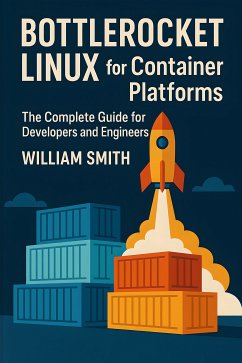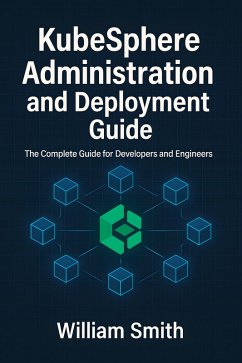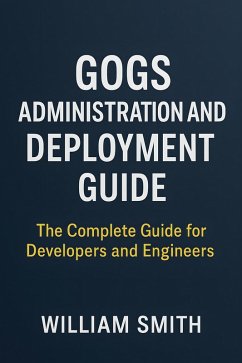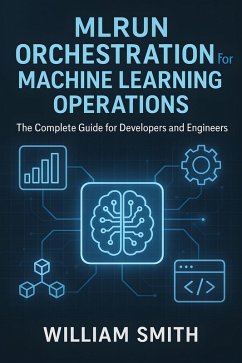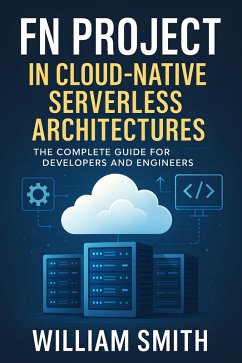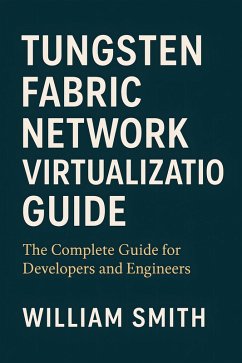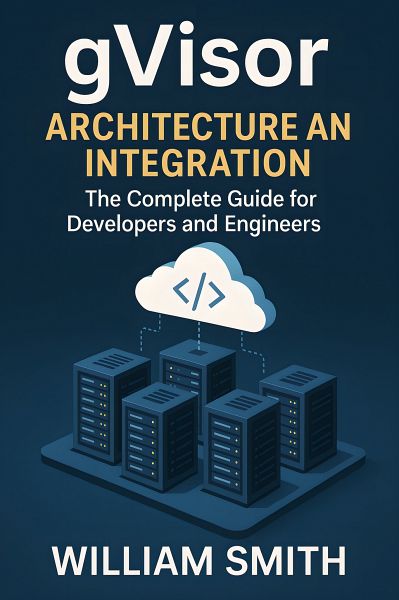
gVisor Architecture and Integration (eBook, ePUB)
The Complete Guide for Developers and Engineers
Sofort per Download lieferbar
8,48 €
inkl. MwSt.

PAYBACK Punkte
0 °P sammeln!
"gVisor Architecture and Integration" "gVisor Architecture and Integration" delivers a comprehensive, technical exploration of gVisor's unique approach to container isolation within cloud-native environments. The book opens by contextualizing modern container security challenges, tracing the genesis of gVisor as a robust, open-source project tailored to address industry demands for stronger multi-tenancy and workload containment. It contrasts gVisor's user-space kernel model against alternative technologies-such as runc, Kata Containers, and Firecracker-clarifying its distinct position in the ...
"gVisor Architecture and Integration" "gVisor Architecture and Integration" delivers a comprehensive, technical exploration of gVisor's unique approach to container isolation within cloud-native environments. The book opens by contextualizing modern container security challenges, tracing the genesis of gVisor as a robust, open-source project tailored to address industry demands for stronger multi-tenancy and workload containment. It contrasts gVisor's user-space kernel model against alternative technologies-such as runc, Kata Containers, and Firecracker-clarifying its distinct position in the ecosystem and its isolation guarantees across typical deployment scenarios, from the cloud to the edge. At its core, the text meticulously examines gVisor's internal architecture, illuminating critical components like the Sentry user-space kernel, Gofer file and network mediator, syscall interception mechanisms, and their interplay in sandboxing containerized workloads. Readers gain an in-depth understanding of gVisor's strategies for emulating kernel constructs-spanning process namespaces, virtual memory, filesystem mediation, and a full user-space TCP/IP stack-alongside performance optimization, observability, and real-world security hardening. The book demystifies the challenges of device emulation, syscall coverage, and the need for careful attack surface reduction, detailing both limitations and robust mitigations. Designed as both a practical integration guide and technical reference, the book moves seamlessly from first principles to advanced operationalization. It outlines the integration of gVisor with major orchestration tools like Kubernetes and Docker, explores continuous deployment and DevOps workflows, and provides actionable case studies from production deployments. Dedicated chapters on performance tuning, cluster-wide monitoring, and community-driven development empower readers to troubleshoot, extend, and contribute to gVisor's ongoing evolution-making this essential reading for cloud architects, security engineers, system developers, and anyone invested in the future of secure, scalable container infrastructure.
Dieser Download kann aus rechtlichen Gründen nur mit Rechnungsadresse in A, B, BG, CY, CZ, D, DK, EW, E, FIN, F, GR, H, IRL, I, LT, L, LR, M, NL, PL, P, R, S, SLO, SK ausgeliefert werden.




